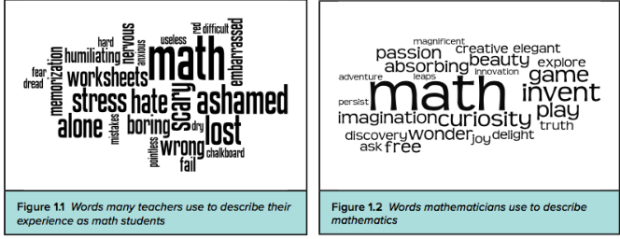Everyone = EVERYONE
Through no fault of their own, students in need of trauma-informed care often do not come to school fully prepared to learn and do mathematics. In 2018, it is especially imperative for educators to purposefully and consistently set a positive, light, risk-safe, culturally relevant tone in classrooms and schools. One way to do this is to plan playful, beautiful, joyful mathematics lessons for students! Some may see this as a nice ideal to which we all give plenty of lip-service, but do not truly believe or apply. To the naysayers, I quote the famous Bruno Mars, “Don’t believe me, just watch!” In an era of rampant microagressions, blatant and violent discrimination, numerous school shootings, and political uncertainty/unrest, many children are living in stressful homes. Understanding these conditions, I wonder how we can set up mathematics classroom communities that provide intellectual and physical safety for ALL students to do mathematics?
I spent most of my 12 years as a classroom teacher at schools with disproportionately high populations of students who were on free and reduced lunch, had language barriers, qualified for Individual Education Plan (IEPs), and the so-called “gifted”. Please hear me when I say, EVERY teacher works hard, kids are kids, and teaching in any setting is one of the toughest, most rewarding jobs on the planet! Still, students with more privileged backgrounds generally do not suffer the same lasting effects felt from a lack of quality maths instruction because they tend to have parental support to help them successfully navigate our educational “system”. In my observations of rooms where a significant number of kids come from traumatic homes, a lack of quality instruction (which requires successful relationship- and community-building) can lead to unsafe, unproductive learning environments.
Creating Better Learning Spaces
What will it take to convince students and teachers that anyone can learn and do mathematics at high levels, and that everyone should have the opportunity to experience beautiful maths at play? As each new school year begins, what instructional choices PROVE (not just say) to students that playfulness, aesthetics, and fun are not only encouraged, but expected in our burgeoning classroom communities? How can we get more kids to move from the sorrowful descriptors on the left to the ones mathematicians use on the right? (See photo below from Zager’s Becoming the Math Teacher You Wish You’d Had) One of the greatest lessons I learned teaching maths over the years is that maximum learning occurs when people are having fun!

In the school I coach, we started off the year building this kind of community by taking the first three weeks to complete various tasks from YouCubed’s Week of Inspirational Math, followed by an in-depth MARS formative assessment lesson, before we dive into the district-adopted Open Up curriculum. We wanted to send a clear message that (a) mistakes and diverse perspectives are valued, (b) fun, beauty, play and teamwork are HOW we do math, and (c) we’re going to tackle some tough stuff in here, so get ready kiddos! Three weeks may seem lengthy, but the middle school receives students from 40+ elementary sites who are often underprivileged. Community-building and establishing routines and structure are especially important for us. Therefore, our best bet is to slowly turn up the math dial to build a solid foundation as we work to reach grade-level standards. Wish us luck and have a great year!
Note: This blog is a part of The Virtual Conference on Mathematical Flavors

Hi Lybrya, Wonderful Post – and no, I don’t think that three weeks is too long! Having kids coming together from so many schools you have to take advantage of the time at the beginning of the year to create the culture that the school wants them to have or they will do it for you, right? I’m just wondering – do you mean to say that those three weeks were the only time during the year that you do those various tasks? I’m sure you mean that it’s a continuous journey creating that culture and throughout the year the teachers will keep sending those messages that you mentioned. Such a tough thing to do to have students change their mindset about what learning math can be. Keep up the great work!!
LikeLiked by 1 person
Hi Carmel! Thank you for your kind words. Usually we do a hard reset after Winter Break when all structure is lost to vacation. And yes, ideally, we insert various GM tasks as needed. Although we sometimes get bogged down with outside influences to our learning schedule.
LikeLike
As a teacher who teaches similar high school students, I do wish you luck but also admire your clarity and thoughts. My struggle is to always value the perspectives and keep it fun while pushing all to learn the more complex mathematics required. And to counter the negative perspectives you describe. Thanks for sharing!
LikeLiked by 1 person
Thanks for your comments! High school mathematics classes can be challenging to teach because the kids are coming into adulthood, but not quite there yet. It’s not necessarily the coolest thing ever to genuinely enjoy MATHS class. Appreciate your thoughts.
LikeLike
It’s an awesome piece of writing for all the web users; they will obtain advantage from it I am sure. https://www.goodreads.com/user/show/86104376-erwin-damron
LikeLike